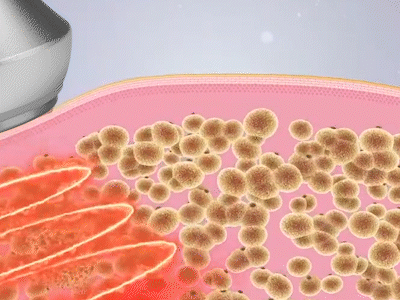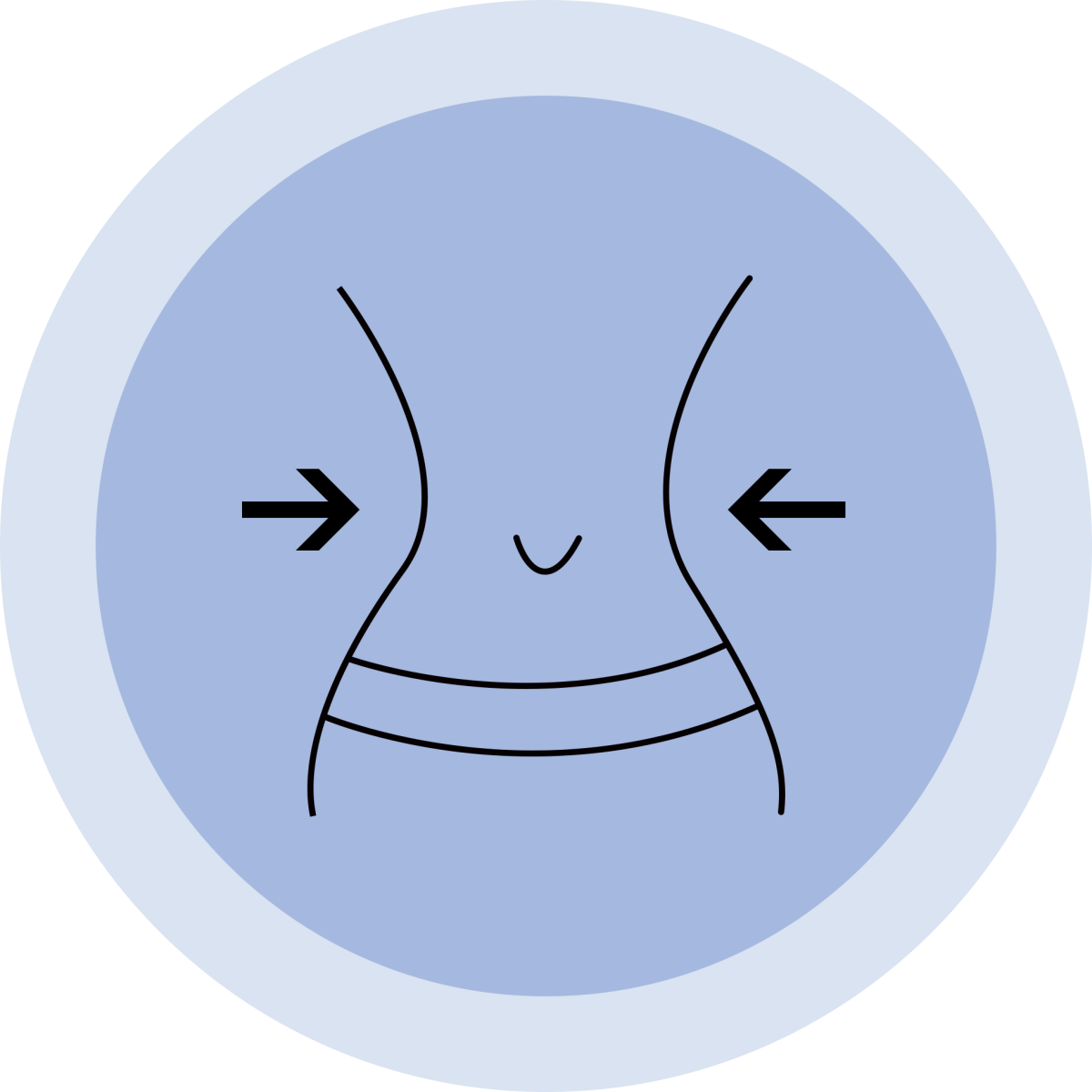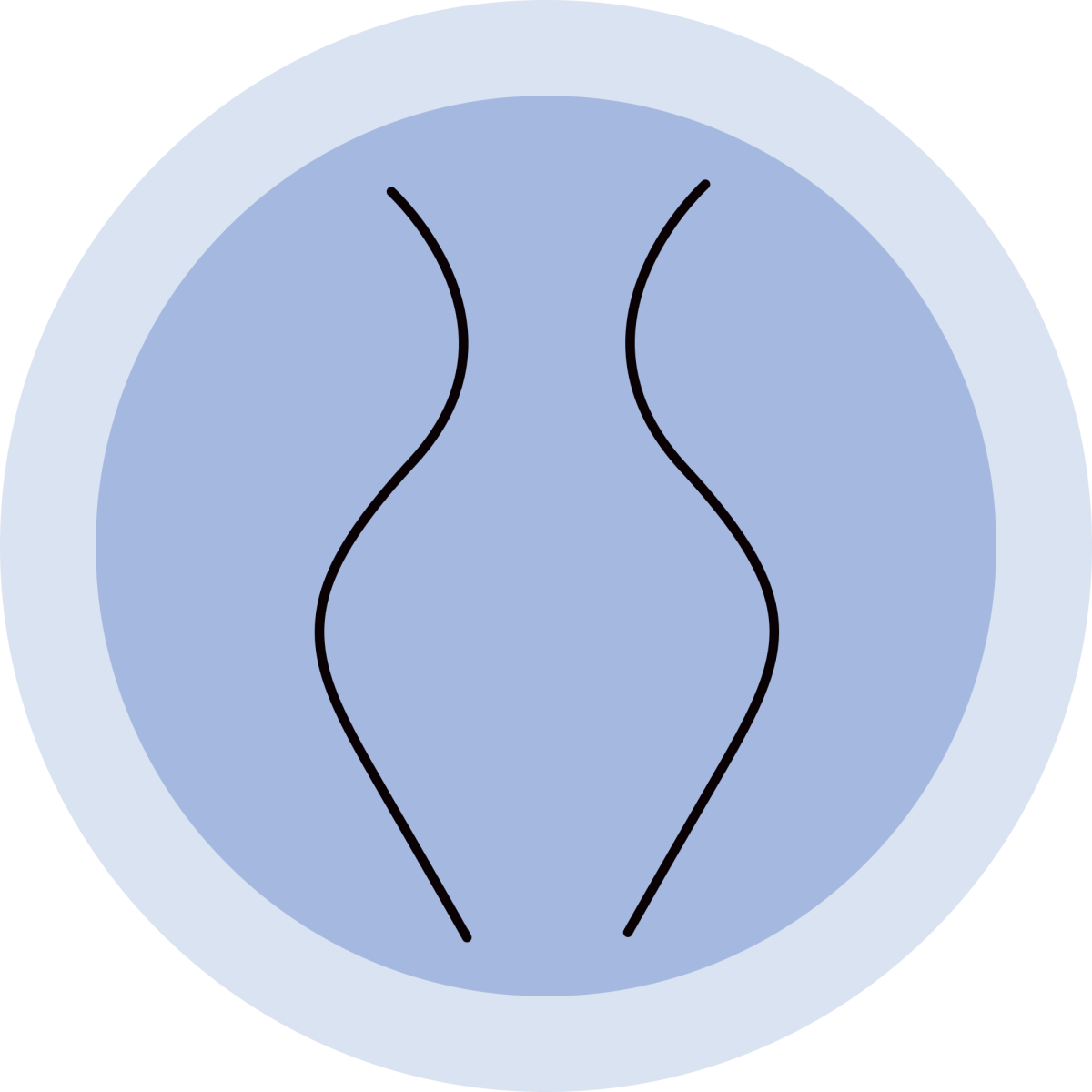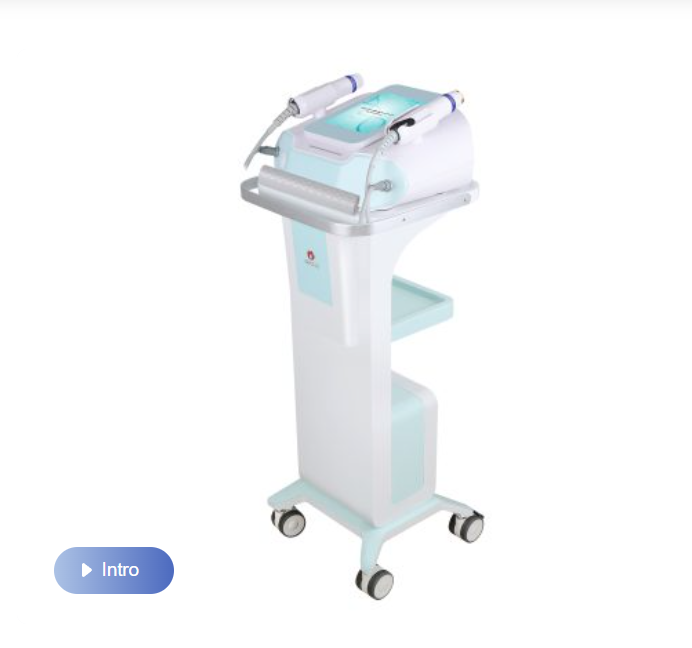HIFU beauty machines represent a groundbreaking advancement in modern medicine. Through their non-invasive approach and precise targeting capabilities, HIFU machines have the potential to revolutionize various medical fields, from cancer treatment to non-surgical cosmetic procedures. With ongoing advancements and further research, HIFU technology is poised to improve patient outcomes, reduce risks, and shape the future of medical treatments in remarkable ways.
Table of Content
- Understanding HIFU Technology
- Medical Applications of HIFU Machines
- Advancements and Innovations
- Benefits and Limitations
- Future Outlook


Understanding HIFU Technology
High-Intensity Focused Ultrasound (HIFU) technology operates on the principle of using focused ultrasound waves to generate heat and precisely target specific tissues within the body. This non-invasive technique offers several advantages over traditional surgical procedures, including reduced risk, minimal scarring, and faster recovery times.
HIFU machines consist of a transducer that emits high-intensity ultrasound waves. These waves pass harmlessly through the skin and other surrounding tissues without causing damage. However, when the waves converge at a focal point within the body, they generate intense heat, reaching temperatures that can effectively destroy targeted tissue.
The focused ultrasound waves emitted by HIFU machines allow for precise targeting of specific areas. Real-time imaging techniques, such as ultrasound or magnetic resonance imaging (MRI), are often employed during HIFU treatments to accurately visualize the tissues being targeted. This imaging guidance ensures that the heat energy is concentrated precisely where it is needed, minimizing damage to surrounding healthy tissues.
Advantages of HIFU over traditional surgical procedures include:
Reduced Risk: HIFU is a non-invasive technique that eliminates the need for incisions or anesthesia. As a result, the risk of surgical complications, such as infections, bleeding, or adverse reactions to anesthesia, is significantly reduced. Patients undergoing HIFU treatments generally experience a lower overall risk profile compared to those undergoing traditional surgery.
Minimal Scarring: Since HIFU treatments are performed externally, there are no incisions or sutures involved. As a result, patients enjoy the benefit of minimal scarring or visible marks on the skin. This is particularly advantageous for cosmetic procedures, where patients seek aesthetic improvements without the telltale signs of surgery.
Faster Recovery Times: HIFU treatments typically have shorter recovery periods compared to surgical interventions. Without the need for surgical incisions or extensive healing, patients can resume their normal activities relatively quickly. This allows for a quicker return to work, reduced post-treatment discomfort, and an overall improved quality of life during the recovery phase.
Precise Targeting and Non-Destructive to Surrounding Tissues: HIFU technology enables precise targeting of specific tissues within the body. By utilizing real-time imaging guidance, HIFU treatments can selectively focus on the intended area while minimizing damage to surrounding healthy tissues. This accuracy reduces the risk of complications and enhances patient safety.
In conclusion, HIFU technology utilizes focused ultrasound waves to generate heat and precisely target specific tissues in a non-invasive manner. The advantages of HIFU over traditional surgical procedures, such as reduced risk, minimal scarring, and faster recovery times, make it an appealing option in various medical fields. As advancements in HIFU technology continue, it holds great potential to reshape the landscape of medical treatments, offering patients a safer and more efficient approach to healthcare.




Medical Applications of HIFU Machines
HIFU machines have a wide range of medical applications, offering innovative treatment options in both the field of oncology and non-surgical cosmetic procedures. Let’s explore two prominent areas where HIFU has shown significant effectiveness: cancer treatment and non-invasive cosmetic procedures.
a. Cancer Treatment:
HIFU has demonstrated promising results in the treatment of localized tumors, offering a non-invasive alternative to surgery or radiation therapy. The focused ultrasound waves can be precisely targeted to destroy cancerous tissue while sparing surrounding healthy tissues.
Here are some notable examples:
Prostate Cancer: HIFU has gained recognition as a treatment option for localized prostate cancer. It can be used to selectively ablate cancer cells within the prostate gland, offering a potential alternative to surgery or radiation therapy. HIFU treatments for prostate cancer have shown favorable outcomes with low rates of complications and minimal impact on urinary and sexual functions.
Breast Cancer: HIFU shows promise in the treatment of breast cancer, particularly for small, early-stage tumors. It can be used as a targeted therapy to ablate tumors, potentially avoiding the need for surgical removal. Clinical studies and ongoing research are exploring the efficacy and long-term outcomes of HIFU in breast cancer treatment.
Liver Cancer: HIFU has been used as a treatment option for liver cancer, especially for small tumors or in patients who are not suitable candidates for surgery. The precise targeting of HIFU allows for selective destruction of liver tumors, providing a potential curative option or serving as a bridge to other therapies such as liver transplantation.
Uterine Fibroids: HIFU can be employed as a non-invasive treatment option for uterine fibroids. By focusing ultrasound waves on the fibroid tissue, HIFU can induce coagulative necrosis, shrinking or eliminating the fibroids. This approach offers an alternative to surgical interventions like hysterectomy or myomectomy, with reduced risk and faster recovery.
b. Non-Invasive Cosmetic Procedures:
HIFU machines have also made significant advancements in the field of non-invasive cosmetic procedures, providing alternatives to surgical interventions for facial rejuvenation, skin tightening, and body contouring. Some notable applications include:
Facelifts: HIFU treatments can stimulate collagen production and tighten the skin, resulting in a rejuvenated appearance. By delivering focused ultrasound energy to targeted areas of the face, HIFU can improve sagging skin, reduce wrinkles, and lift facial contours without the need for surgery.
Skin Tightening: HIFU can be used to tighten loose or lax skin in various areas of the body, including the abdomen, thighs, and arms. The focused ultrasound waves promote collagen remodeling and contraction, leading to firmer and more toned skin.
Body Contouring: HIFU technology has been applied to non-invasive body sculpting. By targeting specific areas with ultrasound energy, HIFU can disrupt fat cells, leading to localized fat reduction and improved body contours. This approach offers a non-surgical option for individuals seeking to address stubborn fat deposits.
These are just a few examples of the diverse range of medical applications for HIFU machines. Ongoing research and advancements in HIFU technology continue to explore new areas of treatment, offering patients innovative solutions with fewer risks, minimal downtime, and improved outcomes.
Advancements and Innovations
In recent years, HIFU technology has witnessed significant advancements and innovations, leading to improved treatment outcomes and expanding its potential applications. Let’s explore some of the notable advancements in HIFU technology and ongoing research efforts that are pushing the boundaries of its capabilities.
Improved Imaging Techniques: One key area of advancement in HIFU technology is the development of improved imaging techniques that enhance treatment precision. Real-time imaging modalities, such as ultrasound or magnetic resonance imaging (MRI), are now integrated into HIFU systems, allowing physicians to visualize the targeted tissues and monitor the treatment process in real-time. This imaging guidance enables accurate positioning of the focal point, ensuring optimal targeting and reducing the risk of damaging surrounding healthy tissues.
Precision Targeting:
Advancements in HIFU technology have also focused on improving precision targeting. Newer HIFU systems incorporate advanced algorithms and software that enable more precise control over the ultrasound beam. This allows physicians to create highly focused and accurate treatment plans, tailoring the therapy to the specific characteristics of the targeted tissue. By refining the precision targeting capabilities, HIFU treatments become even more effective and minimize the potential for off-target effects.
Real-Time Monitoring: Real-time monitoring capabilities are a significant advancement in HIFU technology. By integrating monitoring tools within the HIFU system, physicians can monitor key parameters such as temperature, tissue changes, and feedback signals during the treatment. This real-time monitoring enables adjustments and optimization of treatment parameters, ensuring efficacy and safety throughout the procedure.
Targeted Drug Delivery: Ongoing research is exploring the potential of HIFU for targeted drug delivery. HIFU can be utilized to temporarily disrupt the blood-brain barrier or enhance the permeability of tissues, allowing for more effective delivery of therapeutic agents to specific areas. This approach holds promise in the treatment of brain tumors, neurological disorders, and other localized conditions.
Neurosurgery:
HIFU technology is also being investigated for its potential applications in neurosurgery. Researchers are exploring its use in non-invasive treatment options for conditions like essential tremor, Parkinson’s disease, and neuropathic pain. HIFU can be used to ablate specific areas of the brain, offering an alternative to traditional surgical interventions with potentially fewer risks and complications.
Other Areas of Research: Ongoing research efforts are exploring additional applications of HIFU, such as its potential in treating bone metastases, targeted therapies for certain types of cancer, and localized treatment for benign tumors. The versatility of HIFU technology continues to inspire new avenues of exploration in various medical fields.
The advancements in HIFU technology, improved imaging techniques, precision targeting, and real-time monitoring capabilities have expanded the possibilities of this non-invasive treatment modality. Ongoing research and clinical trials exploring new applications of HIFU, such as targeted drug delivery and neurosurgery, hold the potential to further revolutionize medical treatments and improve patient outcomes. As technology continues to advance, HIFU is poised to play an increasingly significant role in the future of medicine.
Benefits and Limitations
HIFU machines offer several benefits that contribute to their growing popularity in various medical fields. However, like any medical technology, they also have certain limitations that need to be considered. Let’s explore the advantages of HIFU machines and discuss their potential limitations.
Advantages of HIFU Machines:
Non-Invasiveness: One of the key advantages of HIFU machines is their non-invasive nature. HIFU treatments are performed externally, without the need for incisions or invasive procedures. This non-invasive approach eliminates the risks associated with surgery, such as infections, bleeding, and complications related to anesthesia. It also minimizes post-treatment discomfort and allows for faster recovery.
Reduced Risk of Complications: HIFU treatments have a lower risk profile compared to traditional surgical procedures. Since there are no incisions involved, the risk of surgical complications such as wound infections, scarring, and blood loss is significantly reduced. Additionally, HIFU machines enable precise targeting of tissues, minimizing the potential damage to surrounding healthy structures.
Shorter Recovery Periods: HIFU treatments generally have shorter recovery periods compared to surgical interventions. Patients can typically resume their normal activities relatively quickly, leading to improved quality of life and minimal disruption to their daily routines. The shorter recovery periods contribute to the appeal of HIFU, particularly for patients seeking treatment options with minimal downtime.
Limitations of HIFU Machines:
Patient Selection Criteria: HIFU treatments may require careful patient selection. Factors such as the size, location, and accessibility of the targeted tissue play a role in determining the suitability of HIFU. Not all patients or conditions may be suitable for HIFU treatments, and individual assessments are necessary to determine eligibility.
Cost Considerations: The cost of HIFU treatments can be a limitation for some individuals. HIFU technology is still relatively new and may not be widely available in all regions or covered by insurance. The cost of the procedure itself, along with associated imaging and monitoring, can vary, and it is important for patients to consider the financial implications.
Availability of HIFU Technology: The availability of HIFU technology may be limited in certain regions or healthcare settings. HIFU machines require specialized equipment and trained personnel, which may not be universally accessible. The availability of HIFU treatments can vary, and patients may need to consider travel or seek treatment in specialized centers.
Treatment Depth and Size Limitations: The effectiveness of HIFU treatments can be influenced by the depth and size of the targeted tissue. HIFU is most effective for localized tumors or conditions close to the surface of the body. Deeper tissues may be more challenging to treat due to the potential loss of energy along the ultrasound path. Larger tumors may require multiple treatment sessions or alternative approaches.
Conclusion:
HIFU machines offer several advantages over traditional surgical procedures, including non-invasiveness, reduced risk of complications, and shorter recovery periods. The precise targeting capabilities of HIFU contribute to its effectiveness in treating various conditions. However, patient selection criteria, cost considerations, and the availability of HIFU technology can pose limitations. As technology continues to advance and accessibility improves, HIFU has the potential to become a more widespread and transformative tool in modern medicine, providing patients with innovative treatment options and improved outcomes.
Future Outlook
Expanding Treatment Options: As HIFU technology continues to evolve, we can expect to see an expansion of treatment options across various medical specialties. Ongoing research and clinical trials are exploring the efficacy of HIFU in treating conditions such as brain tumors, bone metastases, and cardiac arrhythmias. Furthermore, advancements in HIFU techniques may enable the treatment of larger tumors and deeper tissues, broadening its scope of application.
Increased Accessibility: As HIFU technology becomes more established and widely adopted, it is expected to become increasingly accessible to patients. The availability of HIFU treatments may expand to more healthcare facilities and regions, allowing a larger number of patients to benefit from this non-invasive treatment option. Improved training programs and knowledge dissemination among healthcare professionals will contribute to the wider adoption of HIFU technology.
Integration of AI and Machine Learning: Artificial intelligence (AI) and machine learning have the potential to revolutionize HIFU treatments by optimizing treatment planning, enhancing real-time monitoring, and personalizing patient care. AI algorithms can analyze large datasets of patient information, imaging data, and treatment outcomes to develop predictive models and treatment protocols. These models can aid in optimizing treatment parameters, improving treatment efficacy, and tailoring treatments to individual patient characteristics.
Machine learning algorithms can also assist in real-time monitoring during HIFU treatments. By analyzing real-time feedback data, the algorithms can provide instant feedback to adjust treatment parameters, ensuring optimal energy delivery and tissue ablation. This integration of AI and machine learning has the potential to enhance treatment precision, improve outcomes, and reduce the learning curve for healthcare professionals.
Additionally, AI-powered decision support systems can assist in patient selection, treatment planning, and post-treatment monitoring. These systems can help identify optimal candidates for HIFU treatments, predict treatment responses, and provide personalized follow-up care.
In conclusion, the future of HIFU machines holds immense potential for advancements in imaging technology, expanding treatment options, increased accessibility, and the integration of AI and machine learning. These developments will contribute to further improving the precision, efficacy, and personalization of HIFU treatments, ultimately leading to better patient outcomes and revolutionizing the landscape of non-invasive medical interventions.
Summary
HIFU machines have emerged as a transformative technology in modern medical treatments. This article has explored the underlying principles of HIFU technology, its advantages over traditional surgical procedures, and its diverse range of applications in various medical fields.
HIFU technology utilizes focused ultrasound waves to generate heat and precisely target specific tissues, offering a non-invasive alternative to surgery. The advantages of HIFU machines include reduced risk, minimal scarring, and faster recovery times. They have demonstrated remarkable effectiveness in treating localized tumors, such as prostate cancer, breast cancer, liver cancer, and uterine fibroids. Additionally, HIFU machines have revolutionized non-invasive cosmetic procedures like facelifts, skin tightening, and body contouring.
The blog also discussed recent advancements in HIFU technology, including improved imaging techniques, precision targeting, and real-time monitoring capabilities. Ongoing research and clinical trials are exploring new applications of HIFU, such as targeted drug delivery and neurosurgery. These advancements have the potential to further enhance the effectiveness and expand the applications of HIFU machines.
Furthermore, the article highlighted the benefits of HIFU machines, such as their non-invasiveness, reduced risk of complications, and shorter recovery periods. However, it also acknowledged certain limitations, including the need for patient selection criteria, cost considerations, and regional availability of HIFU technology.
Looking ahead, the future of HIFU machines appears promising. Advancements in imaging technology, expanding treatment options, increased accessibility, and the integration of artificial intelligence (AI) and machine learning are expected to further optimize HIFU treatments and personalize patient care. The transformative impact of HIFU machines on medical treatments is evident, as they improve patient outcomes, minimize invasiveness, and pave the way for new frontiers in medicine.
Overall, HIFU machines have already revolutionized various fields of medicine, and as technology continues to advance, they are poised to play an increasingly significant role in transforming the way we approach and treat various medical conditions, leading to improved patient outcomes and enhanced quality of life.

